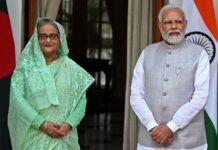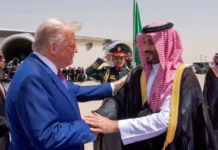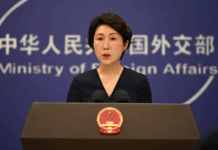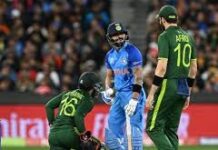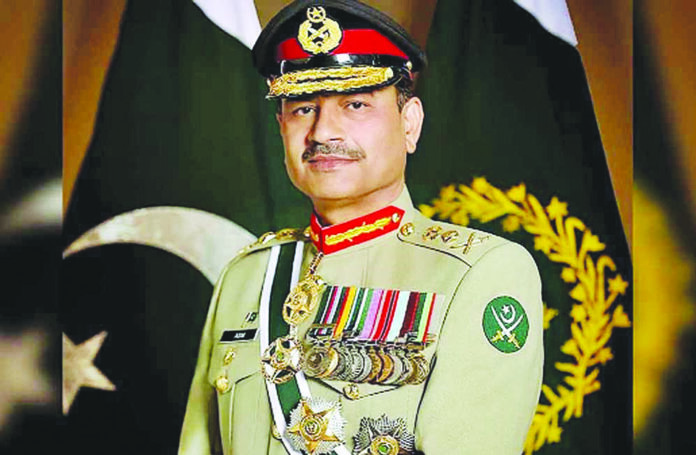AT PENPOINT
Among the most potent symbols of how Pakistan’s profile has changed to the rest of the world since the clash with India over Pehelgam, have been the visit to the USA of Deputy PM and Foreign Minister Ishaq Dar, to China of Chief of Army Staff Field Marshal Asim Munir, and then his hosting the Regional Chiefs of Defence Staff Conference in Islamabad.
They also symbolize the care with which Pakistan is treading the fissure line between the USA and China, as it tries to ensure that it remains on the right side of both. It should not be ignored that Field Marshal Asim figures in all three interactions, in the last two directly, and earlier in Washington to pave the way for Mr Dar. It is also worth noting that while Field Marshal Munir met US President Donald Trump on his visit, Mr Dar did not go beyond a meeting with Secretary of State Mark Rubio.
In a way, the Islamabad conference was very important. Military conversations can assume great significance. The most prominent example is that of the pre-World War I military conversations between the French and British general staffs, which led to a British Expeditionary Force of six infantry divisions and five cavalry brigades being sent to France after the German attack on France violated Belgian neutrality. It might be noted that there was a political decision by the British government to end its ancient rivalry with France, but there was no treaty, no prior agreement, just military conversations.
The conference concentrated on counter-terrorism, but it worth noting that it was attended by all three members of the Northern Distribution Network, which the USA used in place of the routes given by Pakistan for its forces in Afghanistan, after the 2011 Salala incident, in which 28 Pakistani soldiers were killed by US aircraft at the Salala check-post. Uzbekistan, Kazakhstan and Tajikstan were all represented, with only Tajikistan among the attendees not involved in the incident. The meeting was not really against China, not with Pakistan hosting and Kazakhstan in particular attending, but the presence of the USA meant that it was not really a pro-China, or even pro-Russia, meeting.
Like Pakistan, the Central Asian Republics at the meeting would like to maintain good relations with both the USA and China. Their ability to do so, like Pakistan’s, will depend on the USA and China. Neither is at the stage of forcing others to choose. However, the Pehalgam episode has persuaded the USA that its attempt to use India as a regional counterweight to China has failed. India has shown that it is not able to take on Pakistan, let alone Pakistan. Its claims that Pakistan was enabled by Chinese technology, and even its direct assistance, hotly denied by Field Marshal Munir, still show that China would wipe the floor with it.
The USA thus would not want a direct confrontation with China, because it has no counter weight in the region. Pakistan is not really an option, no matter how much some might want it, because it has too close ties with China to abandon it. No other state is really powerful enough.
Perhaps the worst-case scenario, one which presently seems impossible, but which cannot be entirely ruled out: India joins hands with China against Pakistan. At the moment, that seems the only viable option left for India. China is not likely to take it up, but it should not be forgotten that Indo-China trade is $127 billion, while Pak-China trade is $17.8 billion. Even if a state was not so concerned with geo-economics as China is, that sort of money will talk.
India is not going to take the revision of its position lying down. It had hoped to replace China at some future date as a challenger to the USA, but at present it wanted the US alliance badly, because it coincided with several Indian aims, not least because it was friends with Pakistan, and Pakistan relied on US support against India.
Pakistan has got quite a limited agenda. It wants to ensure that India does not spoil the trade deal it has made with the USA. It also wants to prevent Indian defence cooperation with the USA reaching the point where it is sold cutting-edge technology. It would also like to persuade the USA to stop India assassinating people on its soil.
One consequence is that India might try to prove a point by increasing covert activity against Pakistan. Going by the past, it will try to get help from Iran and Afghanistan, but it might not be so easy. As US pressure mounted, Iran and India grew increasingly further apart, to the point that India pulled out of the Chabahar port project, virtually causing its collapse. During Iran’s recent war with Israel, it received no Indian support. The opposite, if anything, as India supported the USA.
Pakistan has thrown its hat in the ring, and offered to help the USA and China reconcile. History does not support the view that this gets much benefit. Pakistan facilitated Nixon’s 1972 trip to China, playing a key role in Kissinger’s secret visit to China before that in July 1971. The story goes that Kissinger supposedly went down with a sudden and brief illness while on a visit to Pakistan. Under its cover, he made a quick visit to China. However, it didn’t really help. India went ahead with the 1971 War; the USA did not fulfil the expectations of Pakistan by sending the 7th Fleet, presumably for the relief of Dhaka, and Bangladesh was born. The lesson should be for Pakistan that the USA will not risk any of its vital interests in exchange for Pakistani facilitation with China. Besides, there is as yet no indication that Pakistan has won Chinese consent to any such effort.
The real danger to Pakistan is to assume that its recent performance against India has accorded it any geopolitical significance. The problem for the fans of geopolitics is that both China and the USA are very much focused on economics. Instead of talking about China or Kashmir, Secretary Rubio talked about minerals mining. The conversations of Field Marshal Munir with his Chinese interlocutors dealt with, among other topics, the China- Pakistan Economic Corridor, which proclaims in its very name its tilt towards economics. What is going to be of overpowering importance is what Pakistan can immediately offer, off the shelf, so to speak. The days when it could offer its alliance are over.
Pakistan is performing a balancing act. However, it should also be aware that both China and the USA know this. There is no particular harm caused by this, because the economic bent of the two means that neither will lift a finger if there is no benefit to be got, and conversely, will go that extra mile to squeeze out the last drop of benefit. Economics were always important, but now they have become paramount.
Pakistan may be only going through a reprieve. India may take a leaf out of Israel’s playbook, and work to achieve a 1971-like situation, where the USA is removed from the equation. A direct approach would be for India and the USA to attack Pakistani nuclear assets jointly. The USA might also be inveigled into joining in if India raises the Chinese bogey.
Meanwhile, Pakistan is happy enough to have got a deal with the USA, and one which ensures the presence of US firms in Pakistan, which means India will not be able to act with impunity.
Perhaps the worst-case scenario, one which presently seems impossible, but which cannot be entirely ruled out: India joins hands with China against Pakistan. At the moment, that seems the only viable option left for India. China is not likely to take it up, but it should not be forgotten that Indo-China trade is $127 billion, while Pak-China trade is $17.8 billion. Even if a state was not so concerned with geo-economics as China is, that sort of money will talk.









